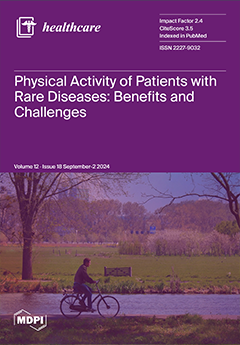Objectives: Controlling the lifestyle associated with dementia risk can delay the process of cognitive decline. Subjective cognitive decline (SCD) and mild cognitive impairment (MCI) are early states in the development of dementia and are also the window period for early intervention in dementia. The purpose of this study was to explore the association between multi-domain lifestyle and objective cognitive impairment in elderly people with SCD and MCI in Chinese communities and to provide reference for effective implementation of precise health management measures to reduce the risk of dementia. Methods: A total of 265 middle-aged and elderly volunteers recruited from the community were divided into SCD group (107 cases), MCI group (80 cases), and healthy control (HC) group (78 cases). All participants received clinical interview, examination, and cognitive assessments. Results: The total Dementia Risk Reduction Lifestyle Scale (DRRLS) scores in the HC, SCD, and MCI groups [110.00 (11.25) vs. 101.00 (10.00) vs. 79.50 (20.75)] exhibited statistically significant differences among them. The total score of the DRRLS showed a significant negative correlation with the Trail-Making Test (TMT), and significant positive correlations with both the Verbal Fluency Test (VFT) and Auditory Verbal Learning Test (AVLT) scores (
p < 0.05). After adjusting for confounding factors, such as age and years of education, multiple linear regression analysis revealed several points. In the SCD group, brain-strengthening exercise and interpersonal relationship scores were negatively correlated with TMT scores (β = −11.257, −15.077; all
p < 0.05), while health responsibility, smoking control behavior, and interpersonal relationship scores were positively correlated with AVLT scores (β = 0.485, 0.344, and 0.406; all
p < 0.05). In the MCI Group, brain-strengthening exercise, brain-healthy diet, and interpersonal relationship were negatively correlated with TMT (β = −22.011, −16.206, −11.696; all
p < 0.01), whereas health responsibility, mental activity, smoking control behavior, interpersonal relationship, and stress management were positively correlated with AVLT (β = 0.450, 0.435, 0.308, 0.256, 0.607; all
p < 0.05). Conclusions: In Chinese communities, the unhealthy lifestyle of elderly individuals with SCD and MCI is significantly associated with cognitive function impairment. The greater their unhealthy lifestyle habits, the more pronounced the scope and severity of cognitive function impairment becomes. Furthermore, different dimensions of lifestyle have varying impacts on cognitive domains.
Full article






